model.energy/future: Future German renewable power system with today's data
First Posted: 2024.01.23, Last Revised: 2024.01.23, Author: Tom Brown
🚨 new web app 🚨
future renewable power systems running on today's market data 🌬️☀️, scaled up
- updated each day 🕰️
- wind, solar, hydro, batteries, hydrogen storage 🔋
- Germany as an island 🏝️
- coming soon: interconnectors, new electric demands 🚗

—
How does it work?
We take the current day's demand, wind, solar and hydro time series from https://smard.de.

Then we divide generation by current capacities and scale them up to the future capacities.
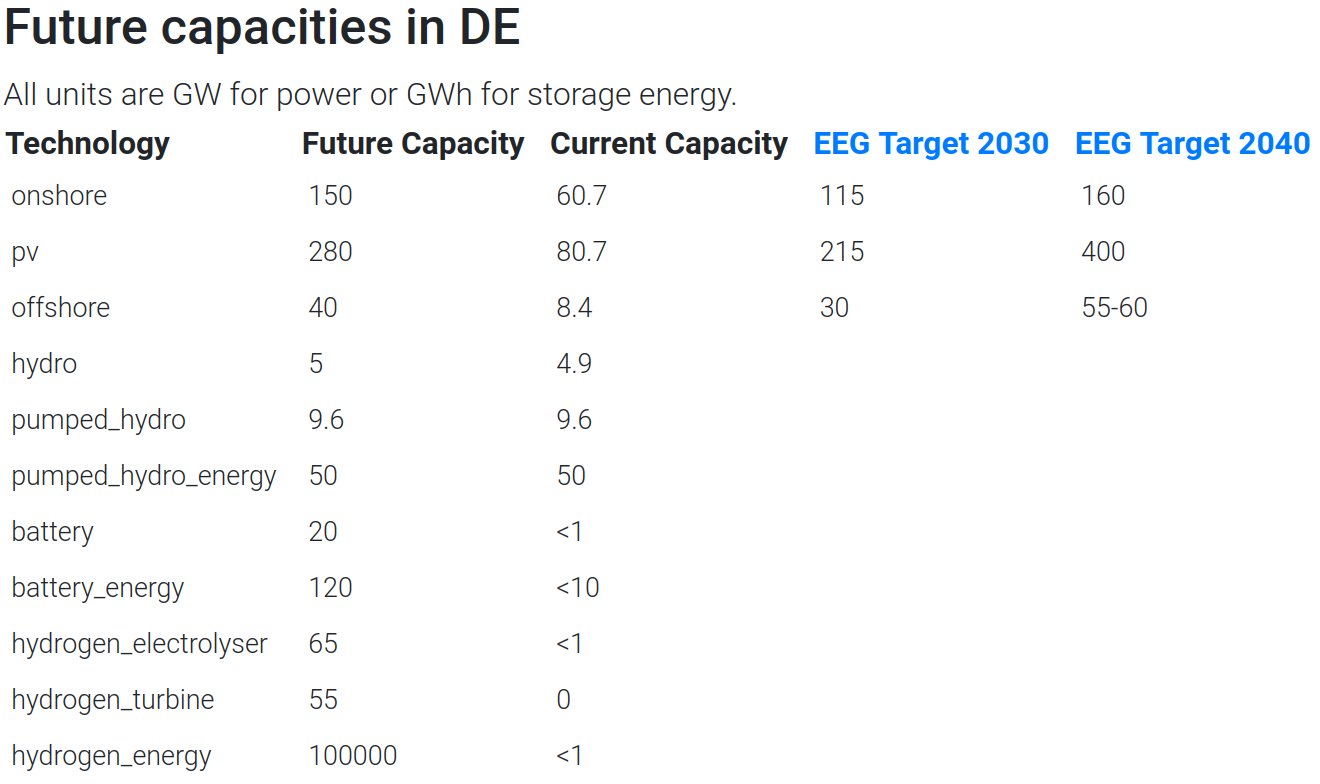
All code and data is open (obvs).
—
For each day we optimise the feed-in of generation and storage (short-term batteries and long-term hydrogen) with 24 hours of foresight, mimicking the day-ahead market.
Demand here includes today's electricity demand and storage charging. Demand and supply match in each hour.
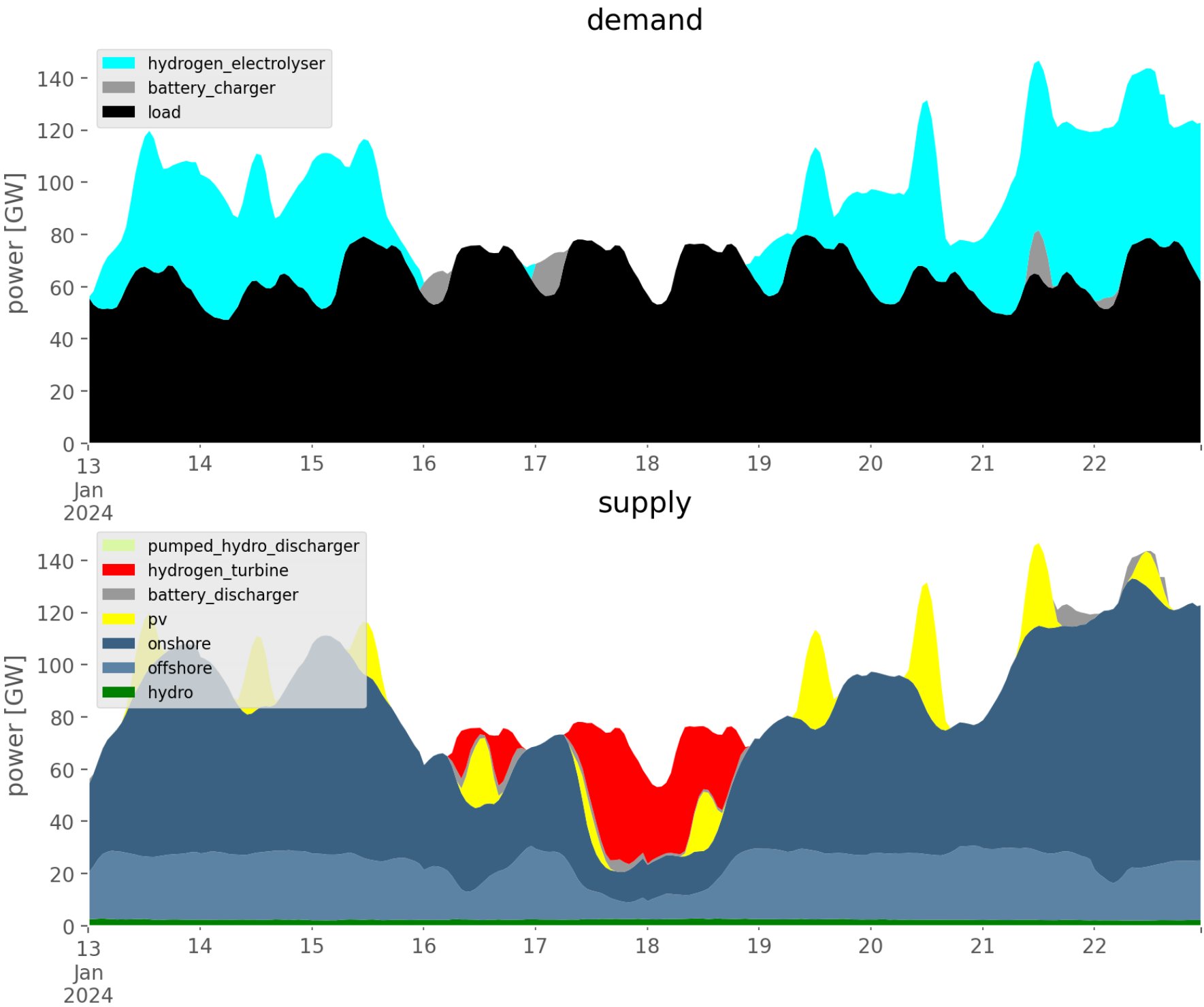
—
We have run this simulation one day at a time with 24 hours foresight over 9 years of data since 2015.
Here are weekly averages where you see more solar + electrolysis in summer, more wind + hydrogen-to-power in winter.
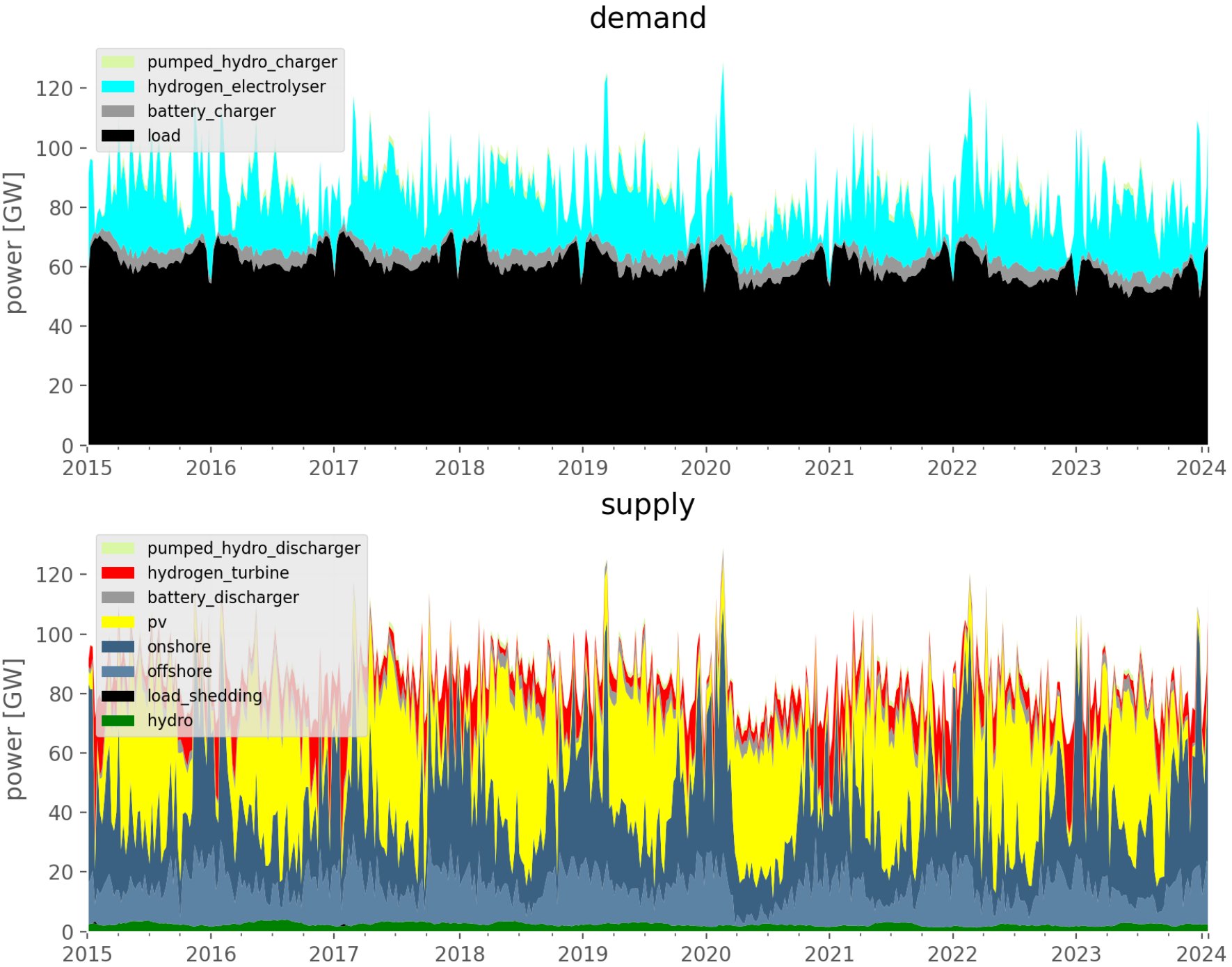
—
Extra renewable generation is needed to cover the storage losses (batteries have round-trip efficiency of ~90% in the model, hydrogen just 39%). This you can see by the share of each technology in the load.
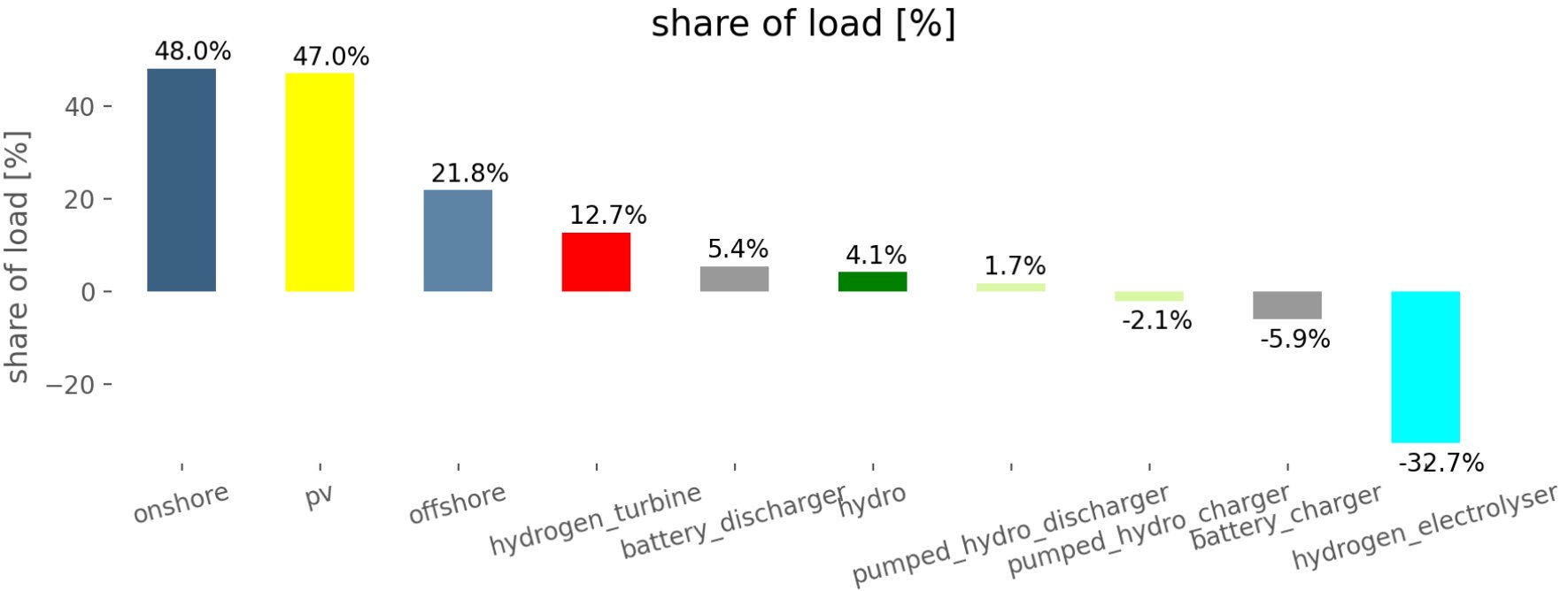
—
Batteries are used to bridge generation gaps of a few hours, while hydrogen bridges multiple days of low wind and solar as well as managing seasonal differences.

—
Hydrogen storage is dispatched on a roughly seasonal basis, filling up in the summer, depleting in the winter.
Note that full power-to-hydrogen-to-power storage systems don't yet exist at scale, and more development is needed for hydrogen turbines to get the NOx emissions down.

—
Hydrogen storage is dispatched using a constant hydrogen value of 80 EUR/MWh (LHV). Like how water values are used to dispatch hydroelectricity systems today.
The hydrogen value influences electricity prices when hydrogen turbines supply power, and when electrolysers consume.
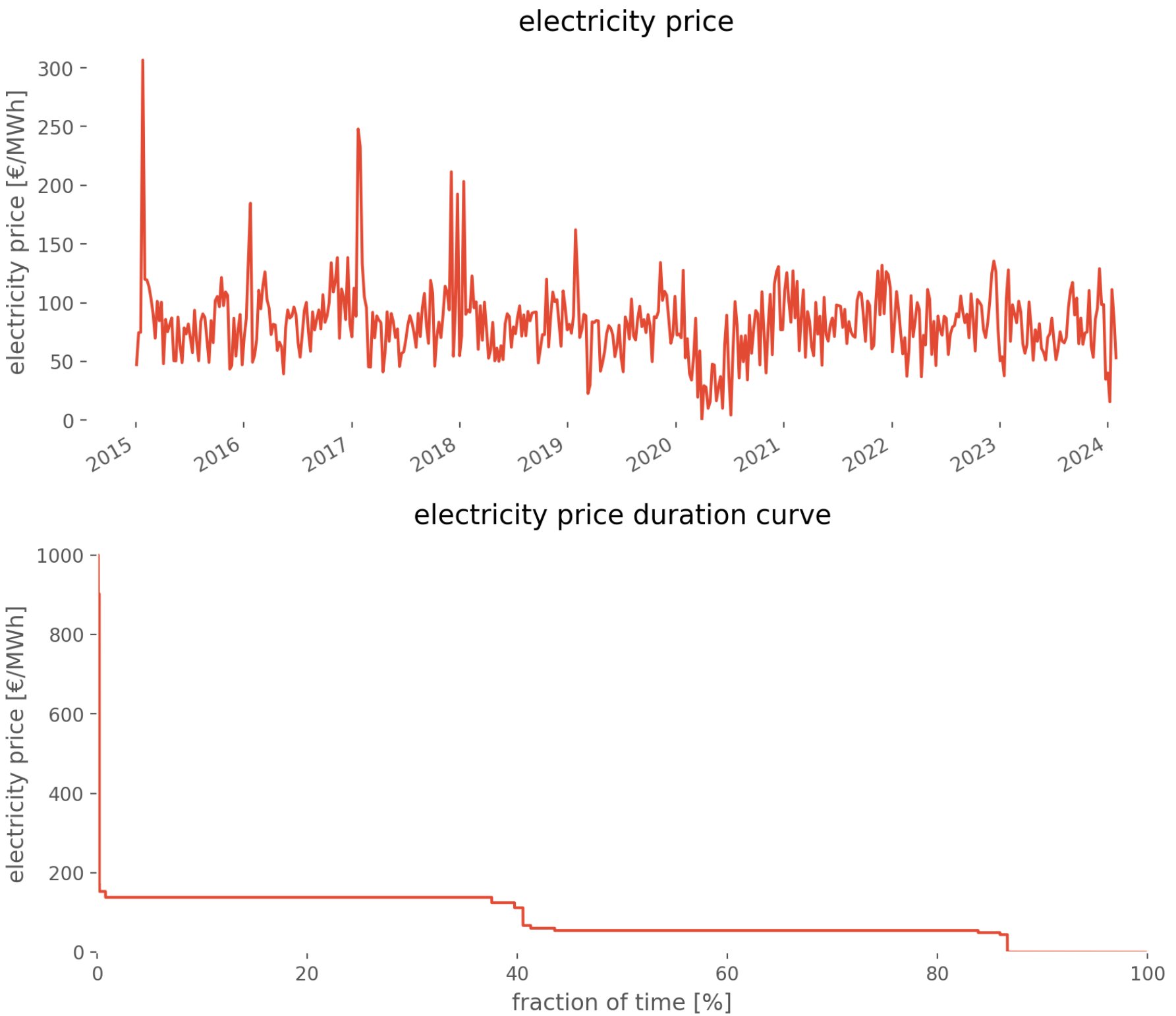
—
Prices here only drop to zero when supply is larger than all flexible demand. The mean electricity price is 82 €/MWh, which allows almost all cost recovery of the system cost 93 €/MWh. Hydrogen turbines don't cover all their investment costs (usual missing money problem).

—
There are many technical details and warnings on the website:
https://model.energy/future/#technical-details
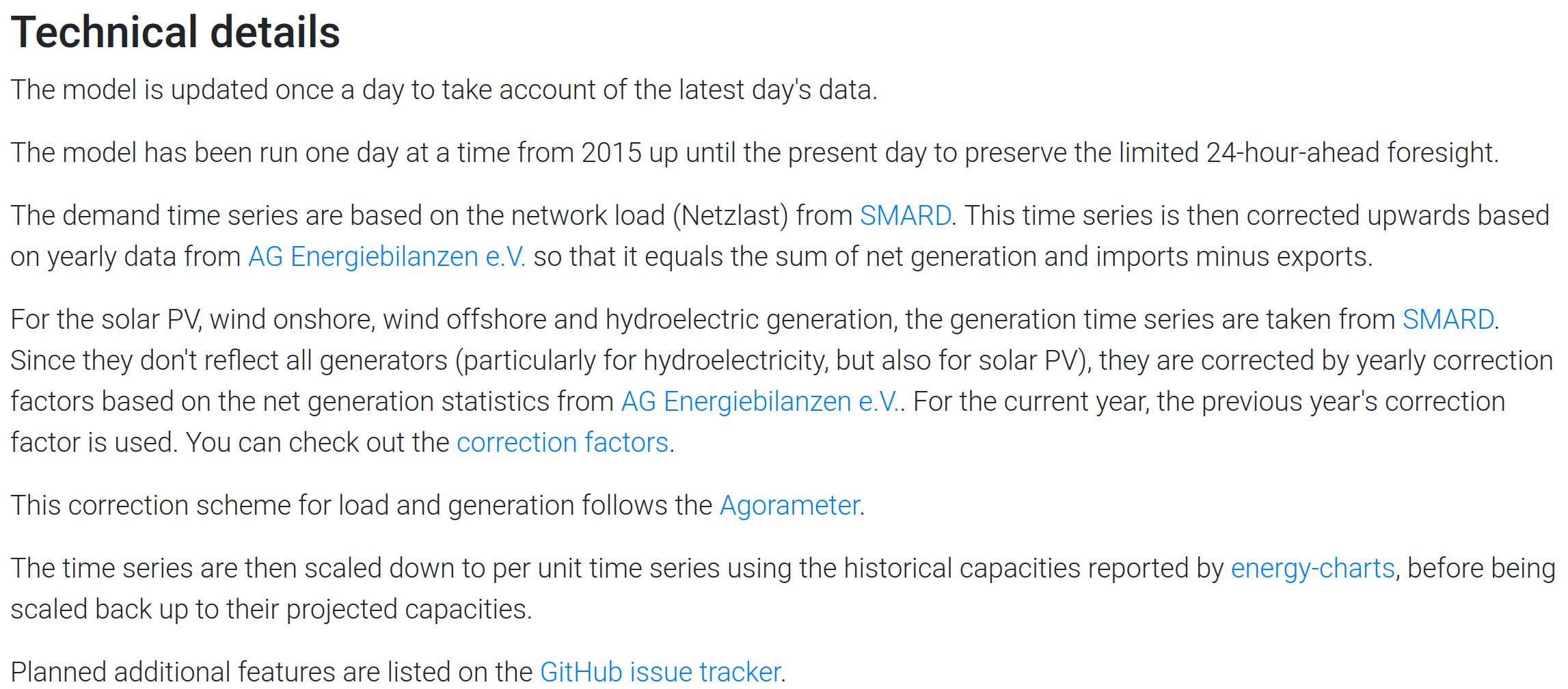
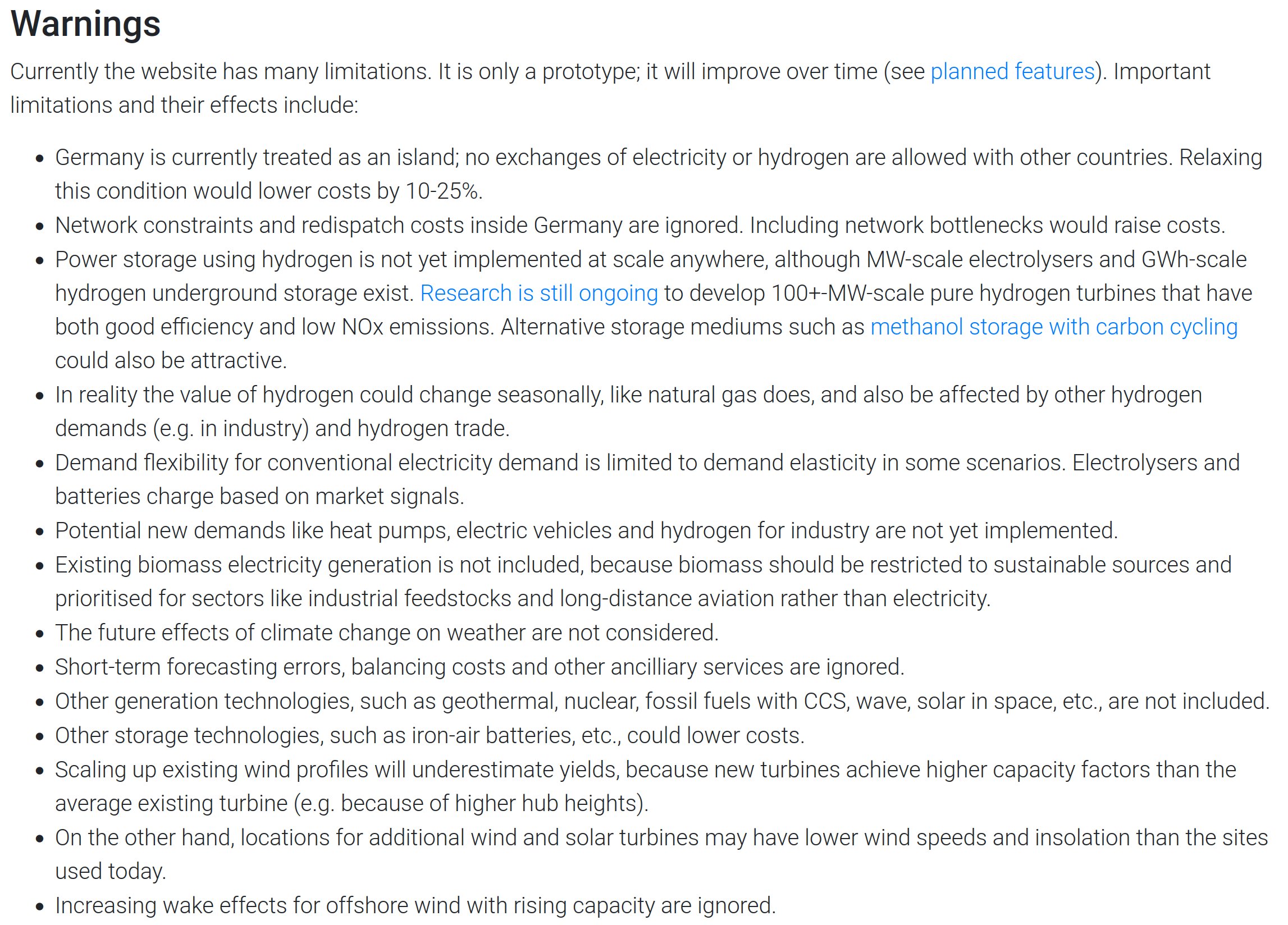
—
In particular:
- Allowing connection to Germany's neighbours would help balance variations, reducing costs and storage needs
- Including new demands like heat pumps and electric vehicles will raise both total electricity demand and peak demand
We'll add these features soon!
—
Thanks to:
- David Osmond for inspiring with simulations for Australia
- #openenergytracker team (Wolf-Peter Schill et al) for brainstorming - it will be integrated there soon!
- BNetzA for data via https://smard.de
- Mirko Schäfer for time series rescaling
—
We welcome all your feedback & suggestions!
There are already many technical details on the site:
and planned features in the GitHub issues:
https://github.com/PyPSA/nowcast/issues
See also: model.energy/future: Live future Germany power system updated with new loads (2024.02.21)